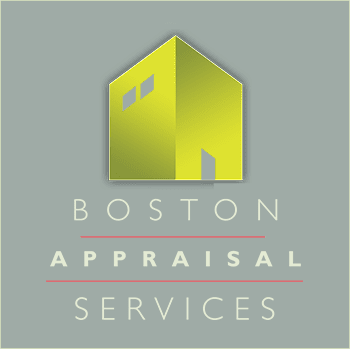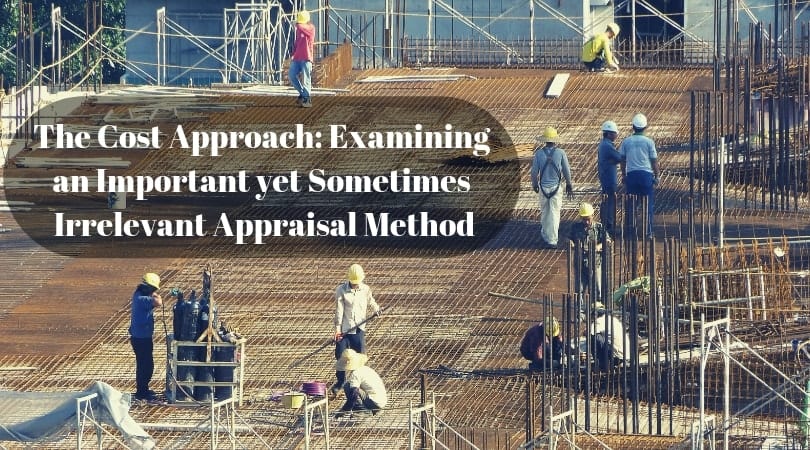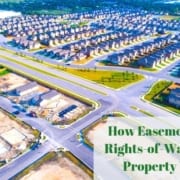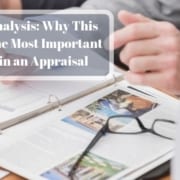The Cost Approach: Examining an Important yet Sometimes Irrelevant Appraisal Method
Categories: Commercial Appraisals, Development, Property Management
It’s standard procedure for most commercial lenders to request all three approaches to value—sales comparison approach, income approach, and cost approach—be undertaken during an appraisal. Usually, there is a stipulation that an approach may be excluded from the valuation if such an approach is deemed dispensable. This omission can be a point of conflict between lenders and appraisers, as the necessity of one or more approaches is debatable in certain situations. This post attempts to clarify the instances where the cost approach is either relevant or extraneous to a property’s valuation. Being able to prudently determine the importance (or otherwise) of the cost approach to valuation increases efficiency and fosters understanding between lenders and appraisers.
What Is this Method all About
Per Investopedia, “The cost approach is a real estate valuation method that surmises that the price a buyer should pay for a piece of property should equal the cost to build an equivalent building.” Essentially, in the cost approach the market value of a property is equal to the cost of the underlying land plus the cost of new construction, minus depreciation. To assist with the cost approach, most appraisers turn to cost manuals, such as the Marshall & Swift Valuation Service, that provide pertinent information on building expenditures associated with different building types, locations, and dates of construction. The following section breaks down the ideal scenarios that require this approach to valuation in commercial appraisals.
When to Use the Cost Approach
The ideal stage to utilize the cost approach is when constructing or proposing a new property. Given that construction expenses associated with erecting a new building should be readily available to the appraiser, these costs are often the best indicator to determine a property’s value. While some buildings may be improved beyond market standards, generally, the most compelling reflection of the cost approach is when the actual price to construct a property is known. The over-improvement issue would likely be adjusted for in an associated sale comparison approach, which would then be reconciled with the cost approach to reach an appraiser’s value conclusion.
The valuation of special-use properties (such as churches, schools, libraries, or other non-income-producing buildings) usually requires the use of the cost approach. Since most of these buildings neither yield an income (and if they do, it’s often at non-market rates) nor frequently transact in some markets, the cost approach can be either the primary or the sole approach for valuation. Although calculating appropriate depreciation can be challenging in these instances, most cost manuals include reference charts to help appraisers determine the right amount of depreciation.
Often when an appraisal is ordered for insurance purposes, a cost-based valuation is required. An example of this is when an insurance company needs to know the exact amount to insure a building, which requires separating the underlying land value from the building’s worth. In this case, the cost method would be the most relevant approach to valuation.
The Cost Approach Is Not Always Relevant
For older properties, the cost approach is generally not as useful. While there are some exceptions, such as found in special-use properties, the high degree of depreciation in older buildings makes it difficult to accurately apply depreciation in the valuation. Considering this reality, buyers normally won’t consider this approach during their buying process, making it not only an unreliable approach to valuation, but also irrelevant in the market.
In some cases, the income approach and the sale comparison approach are enough to determine a property’s value without the use of a cost approach. This cost-approach exclusion tends to be especially true for income-generating properties. For example, unless it was very recently constructed, an appraisal of a multi-tenant retail building would likely exclude the cost approach. In this scenario, given the reliable data derived from the subject property’s income and expenses and the high probability that there are good supporting rent and capitalization rate comparisons in the market area, the income approach would provide the best indication of the subject’s value.
The second-best indication of the property’s value would then be determined by the sales comparison approach (also called the substitution method), again, assuming there are ample sales comparisons within the subject’s market. If there is an active market for the multi-tenant retail building mentioned above, and vacancy rates are relatively low, it is likely that there would be a large pool of buyers interested in purchasing the property. As with the case in older properties, a potential buyer for this multi-tenant retail building most likely wouldn’t consider the cost to construct a similar building in the area, unless the buyer had more specific needs. Their main concerns are the property’s income potential and the cost to acquire the property, compared to other similar properties in the area. Therefore, the cost approach would be irrelevant in the market in this situation and, thus, should be excluded from the appraisal.
Efficient Appraisals
Now that we’ve addressed some examples of when a cost approach is necessary, you’ll have a better understanding of when it’s proper to request a cost approach and when this valuation method is redundant. Identifying instances where the cost approach is not needed can ultimately increase an appraiser’s efficiency and speed up the appraisal process. The necessity of this approach should be discussed in your initial conversation with an appraiser when determining the appropriate scope of work.







I feel that is one of the so much significant information for me. And i am satisfied reading your article. But should remark on some basic issues, The website taste is ideal, the articles is truly excellent : D. Excellent task, cheers
One thing I have actually noticed is the fact that there are plenty of misconceptions regarding the finance institutions intentions any time talking about home foreclosure. One fantasy in particular is that often the bank desires your house. The bank wants your dollars, not the home. They want the cash they gave you together with interest. Averting the bank will only draw any foreclosed final result. Thanks for your article.
I just want to say I am just newbie to blogging and site-building and actually loved you’re website. Almost certainly I’m want to bookmark your website . You certainly come with wonderful articles. Cheers for sharing with us your website.
I appreciated it when you shared that a cost-based valuation is required when an appraisal is required for insurance purposes. In this way, the total amount of claim can be determined by the professional appraiser. I would like to think if a company needs to file a claim for its damaged truck, it should consider working with a reliable appraisal service.